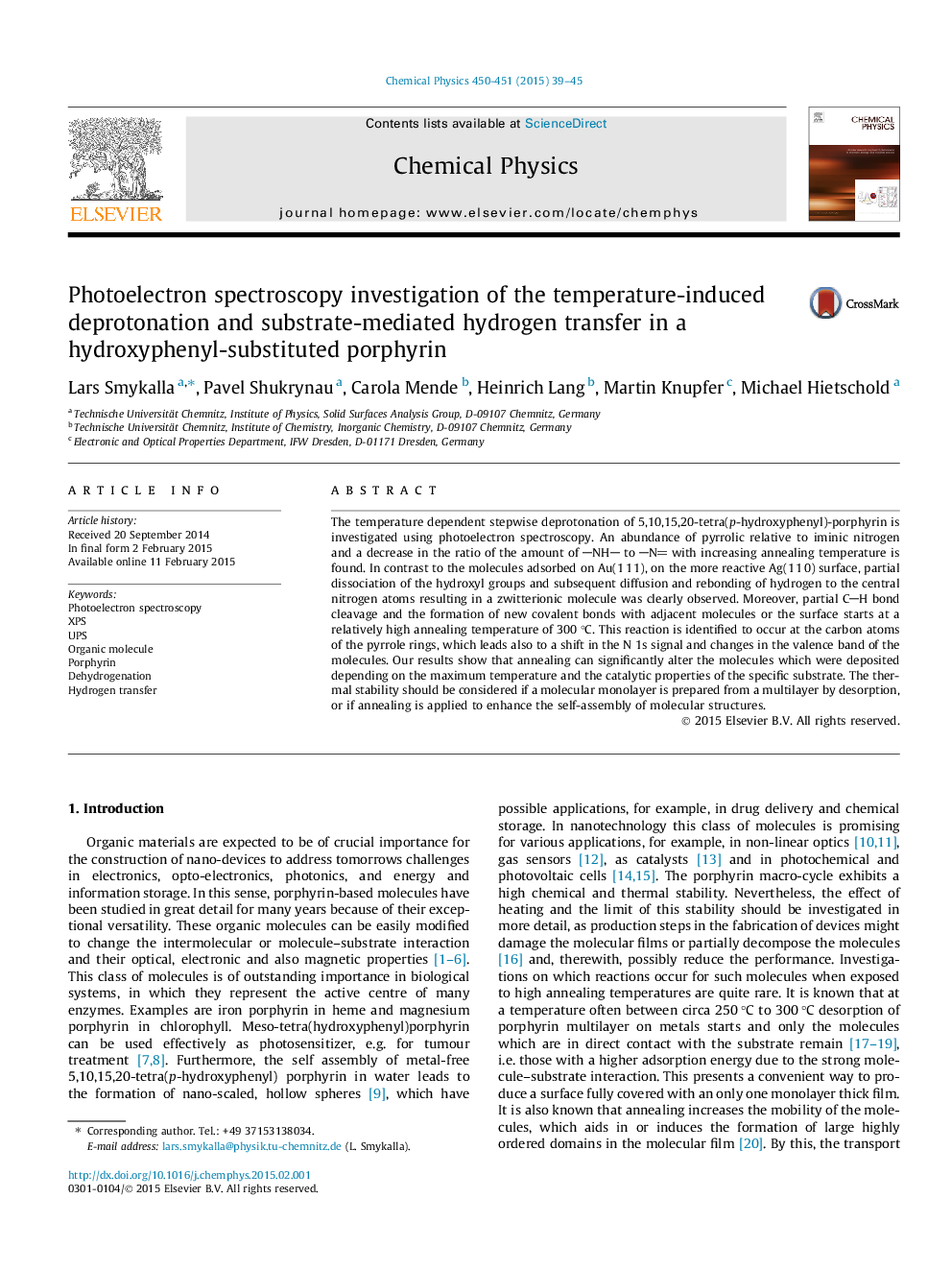| Article ID | Journal | Published Year | Pages | File Type |
|---|---|---|---|---|
| 5373278 | Chemical Physics | 2015 | 7 Pages |
â¢Photoelectron spectroscopy of tetra(p-hydroxyphenyl)porphyrin on Au(1 1 1) and Ag(1 1 0).â¢Ratio of amount of NH to N in the molecule on Au(1 1 1) decreases after annealing.â¢Dissociation of OH groups and transfer of hydrogen atoms to N on Ag(1 1 0).â¢Cleavage of CH bonds of porphyrin macro-cycle at high temperature.â¢Changes of the valence band of the molecule in dependance of annealing temperature.
The temperature dependent stepwise deprotonation of 5,10,15,20-tetra(p-hydroxyphenyl)-porphyrin is investigated using photoelectron spectroscopy. An abundance of pyrrolic relative to iminic nitrogen and a decrease in the ratio of the amount of NH to N with increasing annealing temperature is found. In contrast to the molecules adsorbed on Au(1 1 1), on the more reactive Ag(1 1 0) surface, partial dissociation of the hydroxyl groups and subsequent diffusion and rebonding of hydrogen to the central nitrogen atoms resulting in a zwitterionic molecule was clearly observed. Moreover, partial CH bond cleavage and the formation of new covalent bonds with adjacent molecules or the surface starts at a relatively high annealing temperature of 300 °C. This reaction is identified to occur at the carbon atoms of the pyrrole rings, which leads also to a shift in the N 1s signal and changes in the valence band of the molecules. Our results show that annealing can significantly alter the molecules which were deposited depending on the maximum temperature and the catalytic properties of the specific substrate. The thermal stability should be considered if a molecular monolayer is prepared from a multilayer by desorption, or if annealing is applied to enhance the self-assembly of molecular structures.
Graphical abstractDownload full-size image
